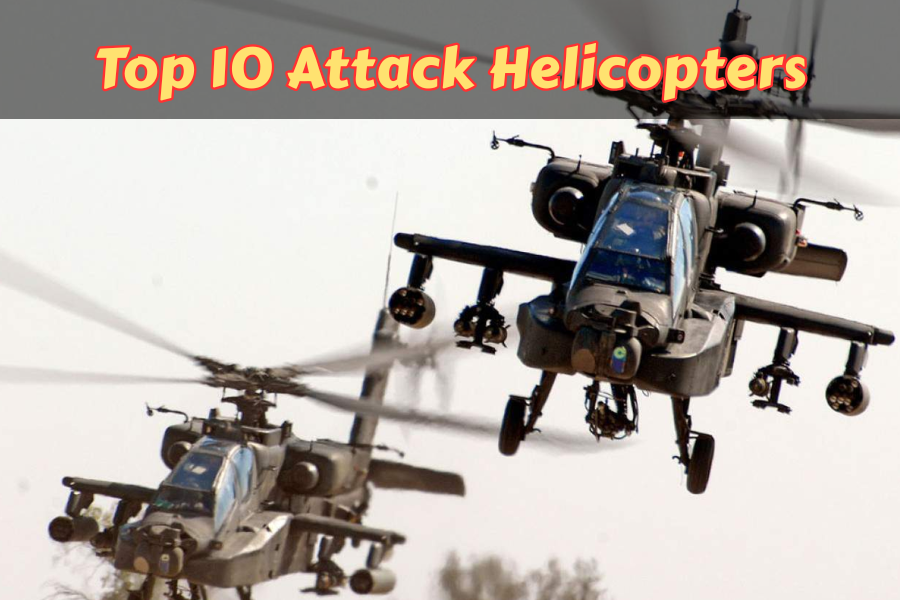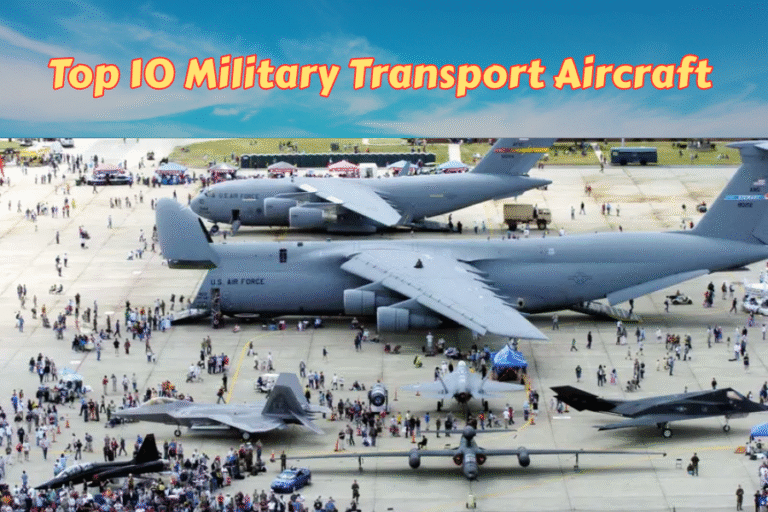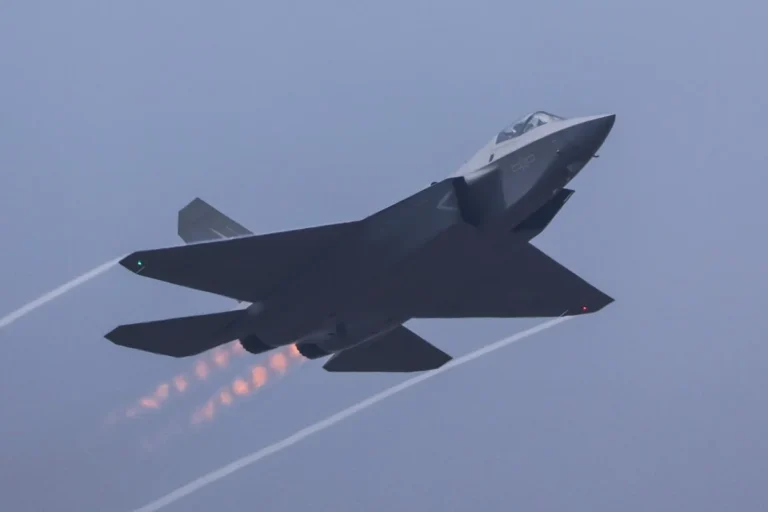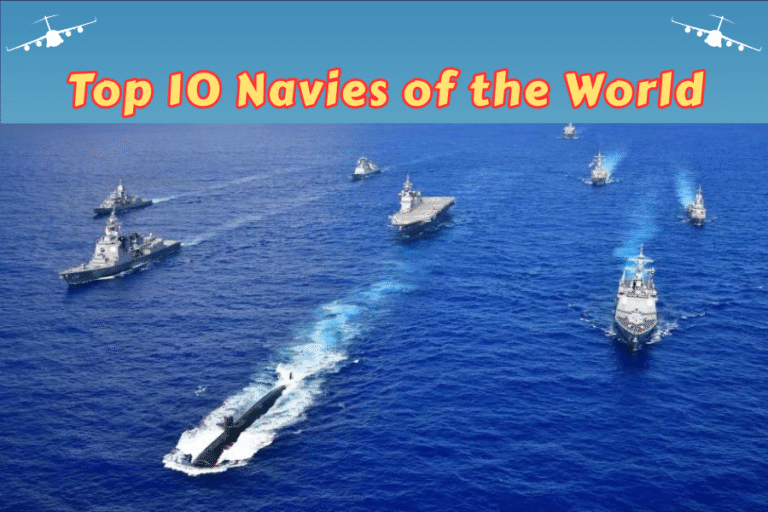(By Khalid Masood)
In the dynamic realm of military aviation, attack helicopters are pivotal for delivering precise firepower and supporting ground forces. These aircraft combine agility, advanced avionics, and heavy armaments to dominate battlefields. Moreover, they excel in anti-tank missions, reconnaissance, and close air support. As we explore 2025, the top 10 attack helicopters of the world showcase a blend of legacy designs and modern innovation. For instance, many feature night vision systems and guided missiles for enhanced precision. Additionally, countries prioritise versatile platforms for diverse terrains. However, challenges like anti-air threats and high costs persist. The keyword “top 10 attack helicopters of the world” highlights the most effective models in use. This article details their history, specifications, operators, pros, and cons, based on extensive research. Furthermore, it answers questions like “which helicopters lead in 2025?” or “what makes them effective?” Drawing from defence analyses, we provide comprehensive insights. Therefore, readers gain a deep understanding of these aerial powerhouses.
Attack helicopters typically carry cannons, rockets, and missiles for multi-role missions. They operate at low altitudes to engage targets accurately. Additionally, pilots use helmet-mounted displays for rapid targeting. Reports indicate over 5,000 attack helicopters are in service globally. The United States leads with advanced platforms, while Russia focuses on rugged designs. Meanwhile, China and Turkey develop competitive models for export. However, legacy models like the Cobra remain relevant. Consequently, the top 10 attack helicopters of the world reflect global diversity. Armed forces across continents deploy them for combat and training. For example, joint exercises showcase their interoperability. Overall, these helicopters shape modern warfare. As drone threats rise, upgrades ensure relevance. Thus, this list highlights the best in 2025.
The evolution of attack helicopters began in the 1950s, transitioning from transport roles to dedicated gunships. They feature tandem cockpits or coaxial rotors for efficiency. Additionally, composite materials enhance speed and reduce weight. Data shows the US Apache dominates exports, while the Russian Mi-24 remains widespread. However, newer models like Turkey’s T129 challenge established leaders. Consequently, competition drives technological advancements. Forces use them for anti-armour and troop support. For instance, in urban conflicts, they provide critical firepower. Overall, these machines are indispensable. As 2025 introduces new threats, electronic warfare upgrades are vital. Thus, the top 10 attack helicopters of the world embody cutting-edge engineering.
1. Boeing AH-64 Apache: Leading the Top 10 Attack Helicopters of the World
The Boeing AH-64 Apache emerged in the 1970s to replace the AH-1 Cobra. The US Army sought a superior gunship. Moreover, Hughes Helicopters won the contract in 1976. The first prototype flew in 1975. Additionally, it entered service in 1986. The Apache excelled in the 1991 Gulf War, destroying tanks. However, upgrades led to the AH-64D Longbow in 1997. This evolved into the AH-64E Guardian by 2012. Furthermore, it features advanced radar systems. Overall, it sets the standard for attack helicopters.
Specifications include a maximum speed of 293 km/h. The range is 476 km on internal fuel. Armament features a 30 mm M230 chain gun with 1,200 rounds. Moreover, it carries Hellfire missiles and Hydra rockets. Engines are two General Electric T700 turboshafts, each producing 1,994 shp. The tandem cockpit seats a pilot and gunner. Additionally, armour protects against 23 mm rounds. The Longbow radar detects targets at 8 km. This enables all-weather operations. Furthermore, the empty weight is 5,165 kg. Overall, it balances power and agility.
Operators include the US Army with over 700 units. The United Kingdom operates 50 AH-64E models. Moreover, India has 22 for border defence. Israel uses 48 for anti-terror missions. Egypt deploys 46 in Sinai. Additionally, Saudi Arabia has 34 for regional security. The Netherlands and Greece maintain smaller fleets. The helicopter supports NATO exercises. However, older versions are being phased out. Overall, it equips 18 nations in 2025.
Pros include the Longbow radar for multi-target engagement. It survives small-arms fire. Moreover, the helmet-mounted display enhances aiming. The modular design allows quick upgrades. Additionally, combat in Iraq proves reliability. This extends its service life. Furthermore, it dominates battlefields. Overall, it excels in precision strikes.
Cons involve high maintenance costs of $10,000 per flight hour. The tandem cockpit limits pilot visibility. Moreover, weight reduces mountain manoeuvrability. Vulnerability to MANPADS remains a concern. Additionally, noise exposes positions. This challenges stealth. However, drone integration helps mitigate risks. Overall, it demands skilled crews.
Notable operations include the 1991 Gulf War, where Apaches destroyed Iraqi radars. They enabled air campaign success. Moreover, in Afghanistan 2002, they supported troops against Taliban. The unit conducted night raids. Additionally, Iraq 2003 saw tank destructions. The force eliminated armour. However, a 2003 ambush downed one, highlighting risks. Furthermore, Syria missions targeted ISIS. Overall, they achieve objectives.
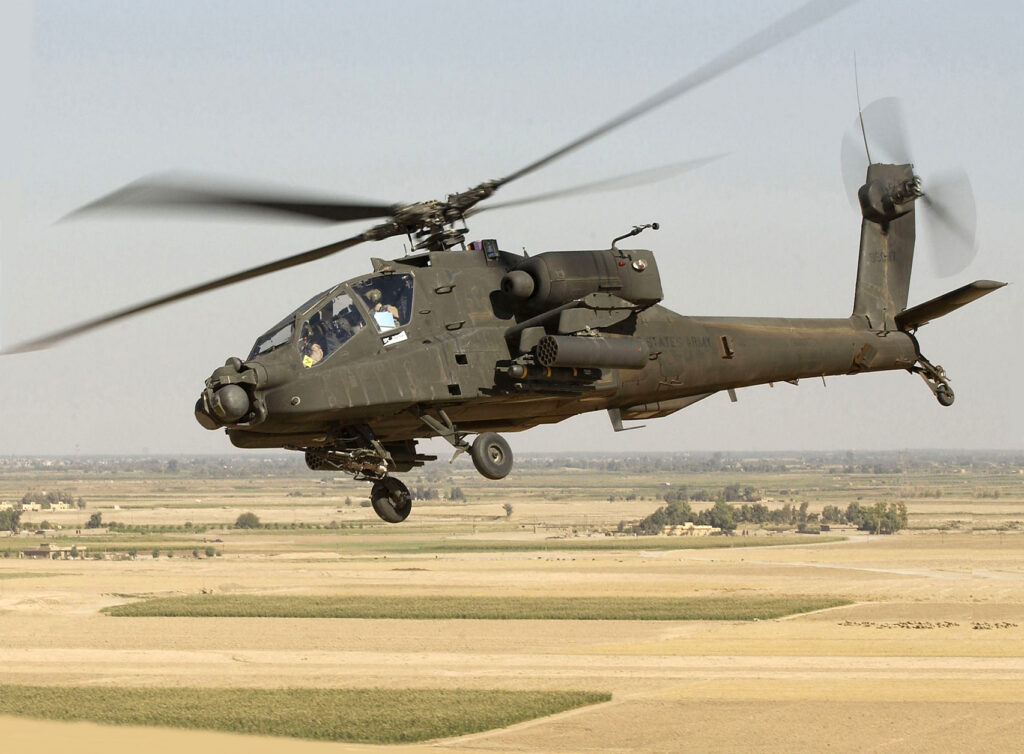
2. Kamov Ka-52 Alligator: Russian Powerhouse in the Top 10 Attack Helicopters of the World
The Kamov Ka-52 Alligator was developed in the 1990s as a two-seat Ka-50 variant. Russia needed a reconnaissance and attack platform. Moreover, Kamov Design Bureau led the project. The first flight occurred in 1997. Additionally, it entered service in 2015. The Alligator saw action in Syria in 2015. However, Ukraine conflicts in 2022 tested it extensively. This led to drone defence upgrades. Furthermore, it features coaxial rotors. Overall, it embodies Russian resilience.
Specifications include a maximum speed of 300 km/h. The range is 460 km on internal fuel. Armament features a 30 mm Shipunov 2A42 cannon with 460 rounds. Moreover, it carries Vikhr missiles and Igla air-to-air missiles. Engines are two Klimov VK-2500 turboshafts, each producing 2,400 shp. The side-by-side cockpit seats two crew members. Additionally, armour protects against 20 mm rounds. The radar detects targets at 35 km. This enables day-night operations. Furthermore, the empty weight is 7,700 kg. Overall, it offers robustness.
Operators include Russia with over 140 units. Armenia has 4 for border defence. Moreover, Egypt operates 46 for Sinai security. Algeria plans acquisitions for desert patrols. Additionally, no other confirmed users in 2025. The helicopter supports Russian exports. However, sanctions limit sales. Overall, it equips Eastern bloc nations.
Pros include coaxial rotors eliminating tail rotor vulnerability. It performs aerobatic manoeuvres. Moreover, the Alligator withstands small-arms fire. The phased array radar enhances targeting. Additionally, the side-by-side cockpit improves coordination. This boosts crew efficiency. Furthermore, Ukraine combat proves durability. Overall, it excels in harsh conditions.
Cons involve high rotor noise. The complex design increases maintenance costs. Moreover, the short range limits deep strikes. Vulnerability to MANPADS persists. Additionally, electronics lag behind Western systems. This affects night operations. However, new engine upgrades help. Overall, it requires skilled mechanics.
Notable operations include the 2015 Syria campaign, where Ka-52s destroyed ISIS tanks. They provided close support. Moreover, in Ukraine 2022, they engaged Ukrainian armour. The unit conducted missile strikes. Additionally, Georgia 2008 saw reconnaissance missions. The force scouted positions. However, 2024 Ukraine losses highlighted drone risks. This exposed gaps. Furthermore, Chechnya operations succeeded. Overall, they deliver firepower.
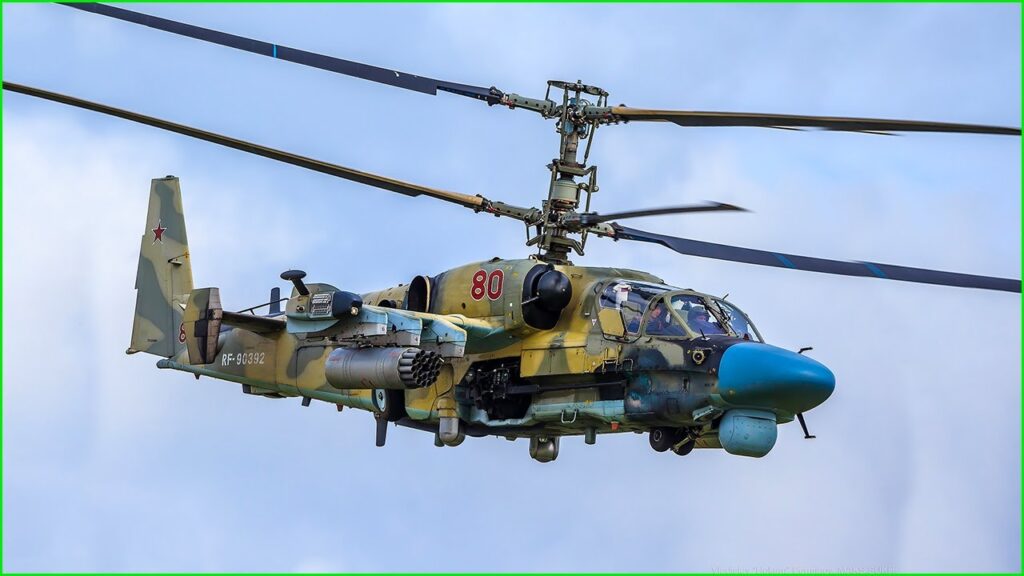
3. Mil Mi-28 Havoc: Robust in the Top 10 Attack Helicopters of the World
The Mil Mi-28 Havoc began development in the 1980s to succeed the Mi-24. Russia sought a dedicated attack platform. Moreover, Mil Design Bureau competed with Kamov. The first prototype flew in 1982. Additionally, it entered service in 2013. The Havoc saw action in Syria in 2016. However, Ukraine conflicts revealed vulnerabilities. This led to armour upgrades. Furthermore, it features tandem cockpits. Overall, it embodies Soviet durability.
Specifications include a maximum speed of 320 km/h. The range is 450 km on internal fuel. Armament features a 30 mm Shipunov 2A42 cannon with 250 rounds. Moreover, it carries Ataka missiles and rockets. Engines are two Klimov VK-2500 turboshafts, each producing 2,200 shp. The tandem cockpit seats a pilot and gunner. Additionally, armour protects against 12.7 mm rounds. The radar detects targets at 10 km. This enables all-weather operations. Furthermore, the empty weight is 8,600 kg. Overall, it provides strength.
Operators include Russia with over 100 units. Algeria has 42 for anti-insurgency. Moreover, Iraq operates 28 for ISIS fights. Venezuela has 10 for border security. Additionally, Uganda uses 6 for regional defence. The helicopter supports Russian exports. However, sanctions restrict sales. Overall, it equips 5 nations in 2025.
Pros include heavy armour for survivability. It withstands hits better than peers. Moreover, the Havoc carries diverse weapons for versatility. The night vision system aids low-light operations. Additionally, the tandem cockpit improves targeting. This enhances accuracy. Furthermore, Syria combat proves effectiveness. Overall, it suits frontal assaults.
Cons involve high weight reducing manoeuvrability. The older design limits speed. Moreover, electronics are vulnerable to jamming. Vulnerability to advanced MANPADS persists. Additionally, noise exposes positions. This challenges stealth. However, new radar upgrades help. Overall, it requires updates.
Notable operations include the 2016 Syria campaign, where Mi-28s destroyed rebel vehicles. They provided support. Moreover, in Ukraine 2022, they engaged Ukrainian positions. The unit conducted strikes. Additionally, Chechnya 1999 saw reconnaissance. The force scouted. However, 2024 Ukraine losses showed drone threats. This exposed weaknesses. Furthermore, Iraq operations succeeded. Overall, they support ground troops.
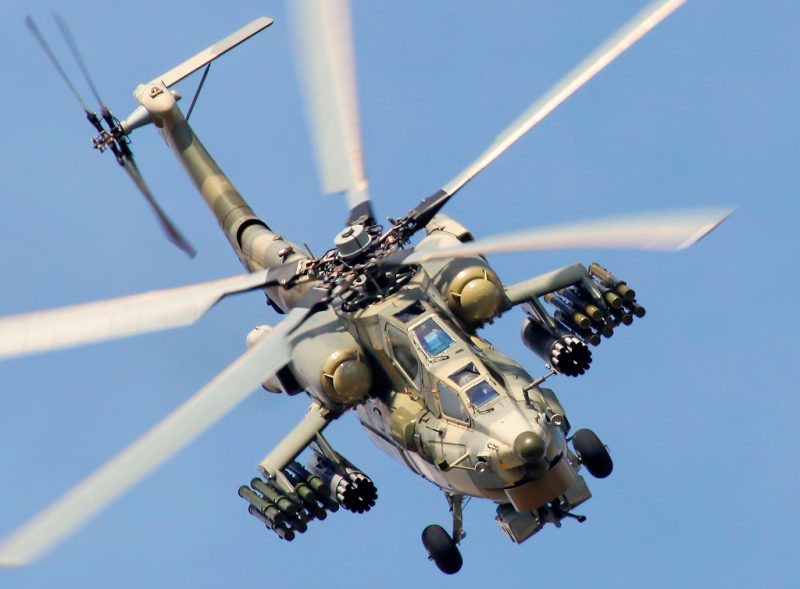
4. Bell AH-1Z Viper: Agile in the Top 10 Attack Helicopters of the World
The Bell AH-1Z Viper evolved from the AH-1 Cobra in the 1990s. The US Marine Corps sought a modernised platform. Moreover, Bell Helicopter led the project. The first flight occurred in 2000. Additionally, it entered service in 2010. The Viper saw action in Afghanistan in 2011. However, it replaced older Cobras. This unified the fleet. Furthermore, it features four-blade rotors. Overall, it represents American innovation.
Specifications include a maximum speed of 411 km/h. The range is 510 km on internal fuel. Armament features a 20 mm M197 Gatling gun with 750 rounds. Moreover, it carries Hellfire and Sidewinder missiles. Engines are two General Electric T700 turboshafts, each producing 1,800 shp. The tandem cockpit seats a pilot and gunner. Additionally, composite rotors reduce noise. The targeting system detects up to 16 km. This enables marine assaults. Furthermore, the empty weight is 5,580 kg. Overall, it offers lightness.
Operators include the US Marine Corps with 189 units. Bahrain has 12 for defence. Moreover, the Czech Republic operates 4 for NATO missions. Pakistan requested 12 for anti-terror. Additionally, no other confirmed users in 2025. The helicopter supports US exports. However, sales are limited. Overall, it equips 3 nations.
Pros include high agility from four-blade rotors. It manoeuvres in tight spaces. Moreover, the Viper carries air-to-air missiles for defence. Integrated sensors aid targeting. Additionally, low maintenance suits deployments. This reduces costs. Furthermore, Iraq combat proves reliability. Overall, it suits amphibious roles.
Cons involve smaller calibre gun limiting firepower. The light armour is vulnerable to heavy fire. Moreover, short range limits deep strikes. Vulnerability to MANPADS persists. Additionally, tandem cockpit limits visibility. This challenges navigation. However, new engine upgrades help. Overall, it requires protection.
Notable operations include the 2011 Afghanistan campaign, where Vipers supported troops. They provided cover. Moreover, in Iraq 2014, they engaged ISIS. The unit conducted strikes. Additionally, Yemen 2015 saw reconnaissance. The force scouted. However, training losses highlighted risks. This exposed pilot errors. Furthermore, Pacific exercises succeeded. Overall, they enhance marines.
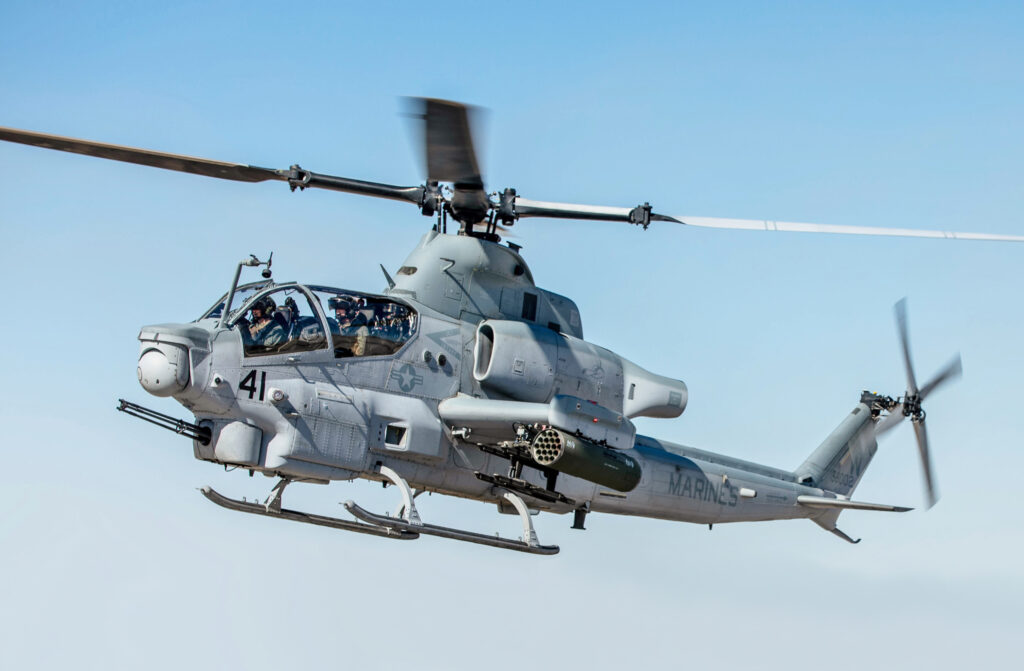
5. Eurocopter Tiger: European Precision in the Top 10 Attack Helicopters of the World
The Eurocopter Tiger was developed in the 1980s as a Franco-German project. It aimed for a light attack platform. Moreover, Airbus Helicopters led the effort. The first flight occurred in 1991. Additionally, it entered service in 2003. The Tiger saw action in Afghanistan in 2009. However, Libya 2011 showcased anti-tank roles. This led to exports. Furthermore, it features stealth elements. Overall, it embodies European collaboration.
Specifications include a maximum speed of 290 km/h. The range is 800 km on internal fuel. Armament features a 30 mm GIAT cannon with 450 rounds. Moreover, it carries HOT missiles and rockets. Engines are two MTU Turbomeca RTM322 turboshafts, each producing 1,300 shp. The tandem cockpit seats a pilot and gunner. Additionally, composite materials reduce radar signature. The roof-mounted sight detects 8 km. This enables low-level flights. Furthermore, the empty weight is 3,060 kg. Overall, it offers stealth.
Operators include France with 67 units. Germany has 55 for army support. Moreover, Australia operates 22 for reconnaissance. Spain uses 24 for anti-armour. Additionally, no other users in 2025. The helicopter supports NATO missions. However, Australia phases it out for Apache. Overall, it equips 4 nations.
Pros include low radar cross-section for survival. It evades detection. Moreover, the Tiger carries precision missiles for accuracy. The modular design allows custom loads. Additionally, light weight improves fuel efficiency. This extends missions. Furthermore, Mali combat proves effectiveness. Overall, it suits Europe.
Cons involve high cost per unit. Complex systems increase maintenance. Moreover, short endurance limits long patrols. Vulnerability to ground fire persists. Additionally, tandem cockpit limits coordination. This challenges communication. However, new sight upgrades help. Overall, it requires funding.
Notable operations include the 2011 Libya campaign, where Tigers destroyed tanks. They provided support. Moreover, in Afghanistan 2009, they engaged Taliban. The unit conducted strikes. Additionally, Sahel missions targeted jihadists. The force scouted. However, training losses showed risks. This exposed mechanical faults. Furthermore, NATO exercises succeeded. Overall, they support alliances.
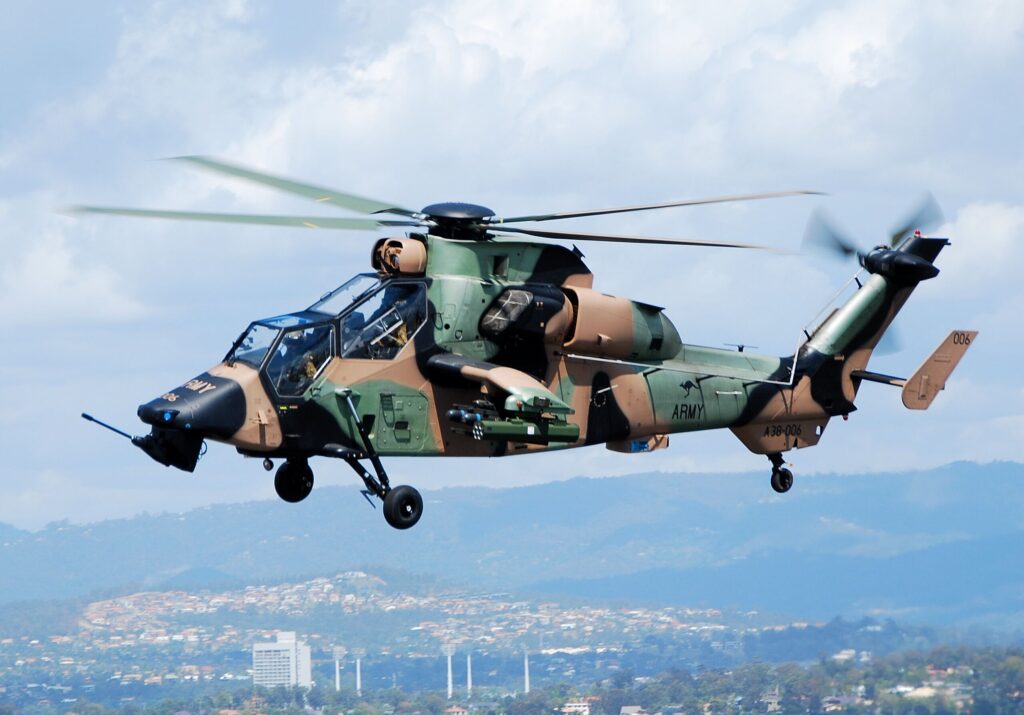
6. CAIC Z-10: Chinese Innovation in the Top 10 Attack Helicopters of the World
The CAIC Z-10 was developed in the 2000s as China’s first dedicated attack helicopter. It aimed to replace older models. Moreover, Changhe Aircraft Industries led the project. The first flight occurred in 2003. Additionally, it entered service in 2012. The Z-10 saw action in border patrols. However, exports to Pakistan began in 2023. This led to upgrades. Furthermore, it features tandem cockpits. Overall, it marks China’s progress.
Specifications include a maximum speed of 270 km/h. The range is 800 km on internal fuel. Armament features a 23 mm chain gun with 300 rounds. Moreover, it carries HJ-10 missiles and rockets. Engines are two WZ-9 turboshafts, each producing 1,350 shp. The tandem cockpit seats a pilot and gunner. Additionally, stealth coatings reduce signature. The radar detects targets at 10 km. This enables all-weather use. Furthermore, the empty weight is 5,540 kg. Overall, it offers balance.
Operators include China with over 200 units. Pakistan has 3 for testing. Moreover, no other confirmed users in 2025. The helicopter supports PLA operations. However, exports are limited. Overall, it equips 2 nations.
Pros include low cost for mass production. It suits budget armies. Moreover, the Z-10 carries anti-tank missiles for armour. The light design improves mobility. Additionally, stealth features aid survival. This reduces detection. Furthermore, drone integration enhances targeting. Overall, it fits Asia.
Cons involve an unproven combat record. Engines lack power in hot climates. Moreover, short range limits deep strikes. Vulnerability to advanced anti-air persists. Additionally, tandem cockpit limits visibility. This challenges aiming. However, new engine upgrades help. Overall, it requires experience.
Notable operations include 2015 border patrols, where Z-10s scouted. They provided support. Moreover, in 2024 exercises, they engaged targets. The unit conducted strikes. Additionally, Pakistan tests succeeded. The force adapted. However, no major conflicts limit data. Furthermore, PLA drills showed potential. Overall, they prepare for future roles.
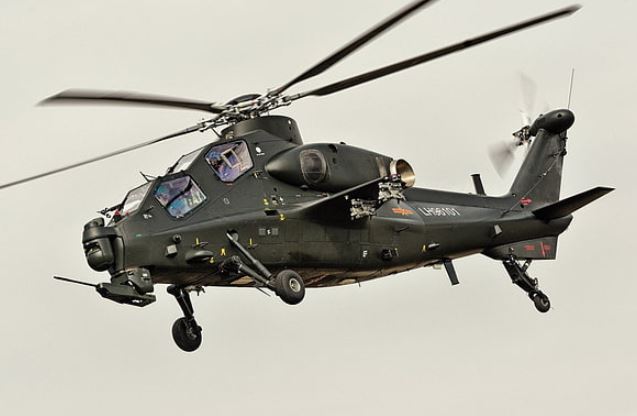
7. Mil Mi-24 Hind: Legendary in the Top 10 Attack Helicopters of the World
The Mil Mi-24 Hind was developed in the 1960s as a gunship and transport. Russia needed a versatile platform. Moreover, Mil Design Bureau created it. The first flight occurred in 1969. Additionally, it entered service in 1972. The Hind saw action in Afghanistan in 1979. However, Ukraine conflicts in 2022 used upgraded versions. This led to losses from MANPADS. Furthermore, it features a troop compartment. Overall, it combines roles..
Specifications include a maximum speed of 335 km/h. The range is 450 km on internal fuel. Armament features a 12.7 mm Yak-B Gatling gun with 1,470 rounds. Moreover, it carries Shturm missiles and rockets. Engines are two Klimov TV3-117 turboshafts, each producing 2,200 shp. The tandem cockpit seats a pilot and gunner. Additionally, armour protects against small arms. The compartment holds 8 troops. This enables hybrid missions. Furthermore, the empty weight is 8,200 kg. Overall, it offers capacity..
Operators include Russia with 200 units. Ukraine has 35 for defence. Moreover, India operates 15 for support. Algeria uses 42 for anti-insurgency. Additionally, over 30 countries in 2025. The helicopter supports exports. However, some phase out older models. Overall, it equips many nations.
Pros include troop transport with attack capabilities. It carries soldiers and fights. Moreover, the Hind withstands damage from guns. Heavy armament overwhelms targets. Additionally, low maintenance costs suit poorer countries. This enables widespread use. Furthermore, Afghanistan combat proves toughness. Overall, it performs multi-role tasks.
Cons involve high visibility from size. The older design lacks stealth. Moreover, short endurance limits long flights. Vulnerability to modern anti-air persists. Additionally, the tandem cockpit limits control. This challenges operations. However, upgrades like new avionics help. Overall, it requires modernisation.
Notable operations include the 1979 Afghanistan campaign, where Hinds supported troops. They provided fire. Moreover, in Chechnya 1994, they engaged rebels. The unit conducted strikes. Additionally, Syria 2015 saw reconnaissance. The force scouted. However, 2022 Ukraine losses showed drone risks. This exposed weaknesses. Furthermore, African missions succeeded. Overall, they support armies.
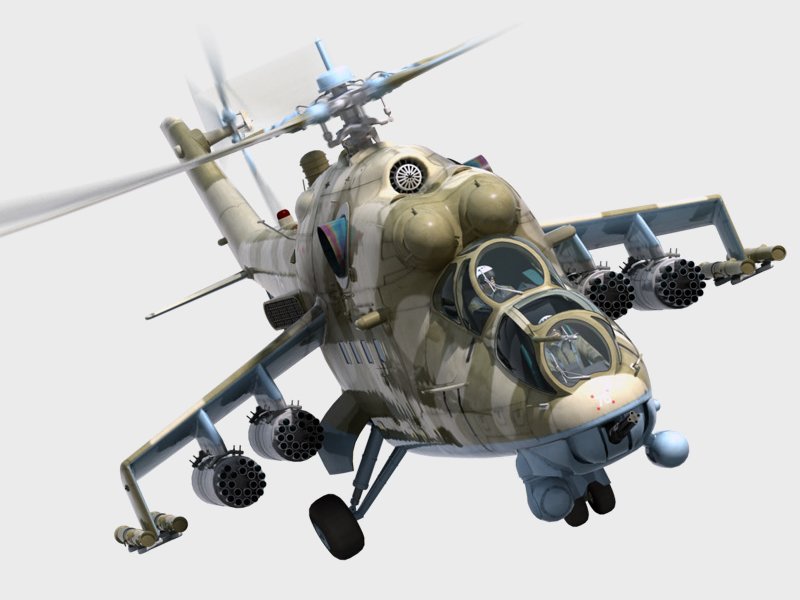
8. Mil Mi-35M: Upgraded Legend in the Top 10 Attack Helicopters of the World
The Mil Mi-35M is an upgraded Mi-24 from the 2000s. Russia sought to modernise for export markets. Moreover, Mil Helicopter Plant led the effort. The first flight occurred in 2005. Additionally, it entered service in 2009. The Mi-35M saw action in Syria in 2017. However, African deployments proved successful. This led to increased sales. Furthermore, it features a glass cockpit. Overall, it extends the Hind’s legacy…
Specifications include a maximum speed of 310 km/h. The range is 450 km on internal fuel. Armament features a 23 mm cannon with 450 rounds. Moreover, it carries Ataka missiles and rockets. Engines are two Klimov VK-2500 turboshafts, each producing 2,400 shp. The tandem cockpit seats a pilot and gunner. Additionally, the troop compartment holds 8 soldiers. Night vision aids low-light operations. This enables hybrid missions. Furthermore, the empty weight is 8,400 kg. Overall, it offers utility.
Operators include Russia with 49 units. Brazil has 12 for patrols. Moreover, Venezuela uses 10 for defence. Kazakhstan operates 4 for security. Additionally, over 20 countries in 2025. The helicopter supports Russian exports. However, some nations upgrade to newer models. Overall, it equips many forces.<
Pros include troop transport alongside attack roles. It carries soldiers and engages targets. Moreover, the Mi-35M has digital avionics for accuracy. Heavy armour withstands hits. Additionally, low maintenance costs suit developing nations. This enables affordability. Furthermore, Mali combat proves reliability. Overall, it performs versatile tasks.
Cons involve high rotor noise. The older frame limits speed. Moreover, short endurance restricts long missions. Vulnerability to modern anti-air persists. Additionally, the tandem cockpit limits coordination. This challenges operations. However, upgraded avionics help. Overall, it requires careful maintenance.
Notable operations include the 2017 Syria campaign, where Mi-35Ms supported troops. They provided fire. Moreover, in Nigeria 2018, they engaged Boko Haram. The unit conducted strikes. Additionally, Venezuela patrols succeeded. The force scouted. However, Armenia losses showed risks. This exposed vulnerabilities. Furthermore, exercises proved effective. Overall, they support ground operations.
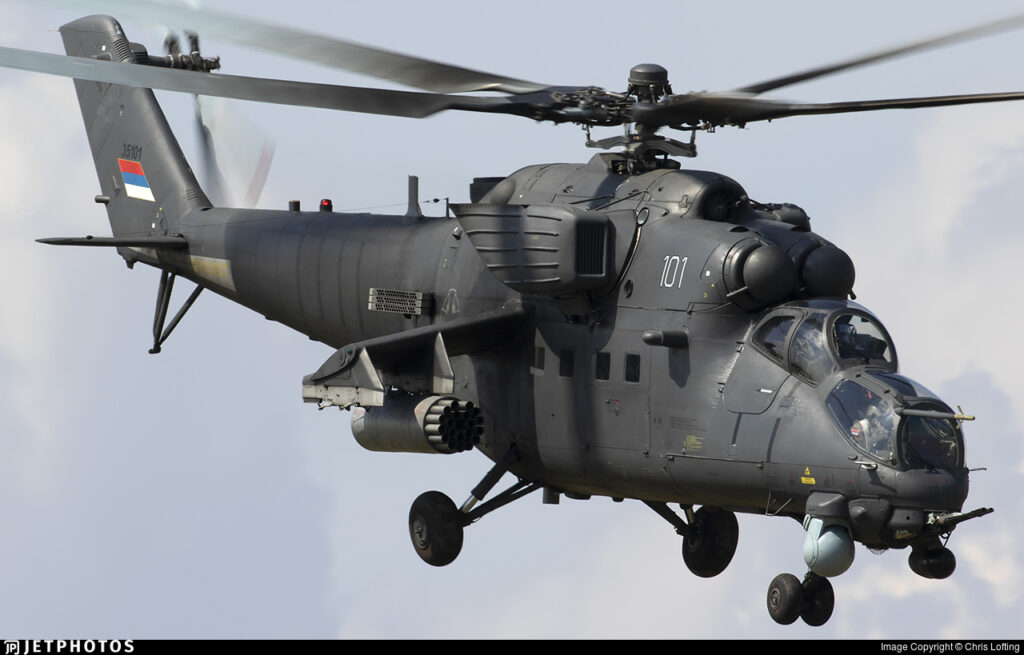
9. Bell AH-1S Cobra: Historic in the Top 10 Attack Helicopters of the World
The Bell AH-1S Cobra, an upgraded version of the original AH-1 Cobra, emerged in the 1970s to enhance anti-tank capabilities. The US Army sought a dedicated gunship for Vietnam. Moreover, Bell Helicopter developed it from the UH-1 Huey. The first AH-1 flew in 1965, with the AH-1S entering service in 1977. Additionally, it saw action in Grenada 1983. However, the US phased it out for Apaches by 2001. This led to exports to allies. Furthermore, it features a tandem cockpit. Overall, it represents a historic milestone.
Specifications include a maximum speed of 277 km/h. The range is 507 km on internal fuel. Armament features a 20 mm M197 Gatling gun with 750 rounds. Moreover, it carries TOW missiles and Hydra rockets. Engines are one Lycoming T53-L-703 turboshaft, producing 1,800 shp. The tandem cockpit seats a pilot and gunner. Additionally, light armour protects against small arms. The targeting system detects at 5 km. This enables day operations. Furthermore, the empty weight is 3,003 kg. Overall, it offers agility.
Operators include Pakistan, Japan with 54 units for defence. Israel has 20 for anti-terror missions. Moreover, Jordan operates 25 for border security. Thailand uses 7 for insurgency. Additionally, South Korea maintains 10 in 2025. The helicopter supports export markets. However, many operators transition to newer models. Overall, it equips 5 nations.
Pros include lightweight design for manoeuvrability. It operates in tight spaces. Moreover, the Cobra carries TOW missiles for armour. Low maintenance costs suit smaller budgets. Additionally, combat experience in Vietnam proves reliability. This extends its legacy. Furthermore, simple systems ease repairs. Overall, it suits cost-conscious forces.
Cons involve outdated avionics limiting night operations. Light armour is vulnerable to heavy fire. Moreover, single engine reduces redundancy. Vulnerability to MANPADS persists. Additionally, tandem cockpit limits visibility. This challenges navigation. However, upgrades like new sights help. Overall, it requires modernisation.
Notable operations include the 1983 Grenada invasion, where Cobras supported troops. They provided cover. Moreover, in Panama 1989, they engaged Noriega’s forces. The unit conducted strikes. Additionally, Iran-Iraq War saw Iraqi use. The force targeted tanks. However, losses in Vietnam showed risks. This exposed vulnerabilities. Furthermore, Japanese exercises succeeded. Overall, they remain effective for legacy roles.
10. TAI T129 ATAK: Turkish Versatility in the Top 10 Attack Helicopters of the World
The TAI T129 ATAK was developed in the 2000s as a Turkish variant of the Italian A129 Mangusta. Turkey aimed for indigenous production. Moreover, Turkish Aerospace Industries collaborated with AgustaWestland. The first flight occurred in 2009. Additionally, it entered service in 2014. The ATAK saw action in Syria in 2018. However, export delays to Pakistan occurred due to engine issues. This led to local upgrades. Furthermore, it features advanced avionics. Overall, it showcases Turkish ambition.
Specifications include a maximum speed of 278 km/h. The range is 561 km on internal fuel. Armament features a 20 mm cannon with 500 rounds. Moreover, it carries UMTAS missiles and Hydra rockets. Engines are two LHTEC CTS800 turboshafts, each producing 1,373 shp. The tandem cockpit seats a pilot and gunner. Additionally, composite armour protects against small arms. The Aselsan avionics detect targets at 8 km. This enables all-weather operations. Furthermore, the empty weight is 5,000 kg. Overall, it offers versatility.
Operators include Turkey with 70 units for counter-terrorism. Pakistan operates 30 for anti-insurgency. Moreover, the Philippines uses 6 for rebel suppression. Poland considers acquisitions for NATO roles. Additionally, Azerbaijan evaluates 10 units in 2025. The helicopter supports Turkish exports. However, engine supply issues limit sales. Overall, it equips 3 confirmed nations
Pros include high-altitude performance for mountainous terrain. It operates in hot climates. Moreover, the ATAK carries precision UMTAS missiles for accuracy. Indigenous avionics reduce reliance on imports. Additionally, light design improves fuel efficiency. This extends patrol durations. Furthermore, combat in Kurdistan proves effectiveness. Overall, it suits rugged environments.
Cons involve dependence on foreign engines, delaying exports. Smaller size limits payload capacity. Moreover, short range restricts deep strikes. Vulnerability to advanced anti-air systems persists. Additionally, tandem cockpit limits crew coordination. This challenges complex missions. However, local upgrades like new sensors help. Overall, it requires industrial growth.
Notable operations include the 2018 Afrin campaign, where ATAKs destroyed vehicles. They provided close support. Moreover, in Iraq 2020, they engaged ISIS targets. The unit conducted precise strikes. Additionally, Libya 2020 saw reconnaissance missions. The force supported ground troops. However, Syria losses exposed risks to ground fire. This highlighted vulnerabilities. Furthermore, domestic exercises demonstrated reliability. Overall, they bolster Turkey’s defence.
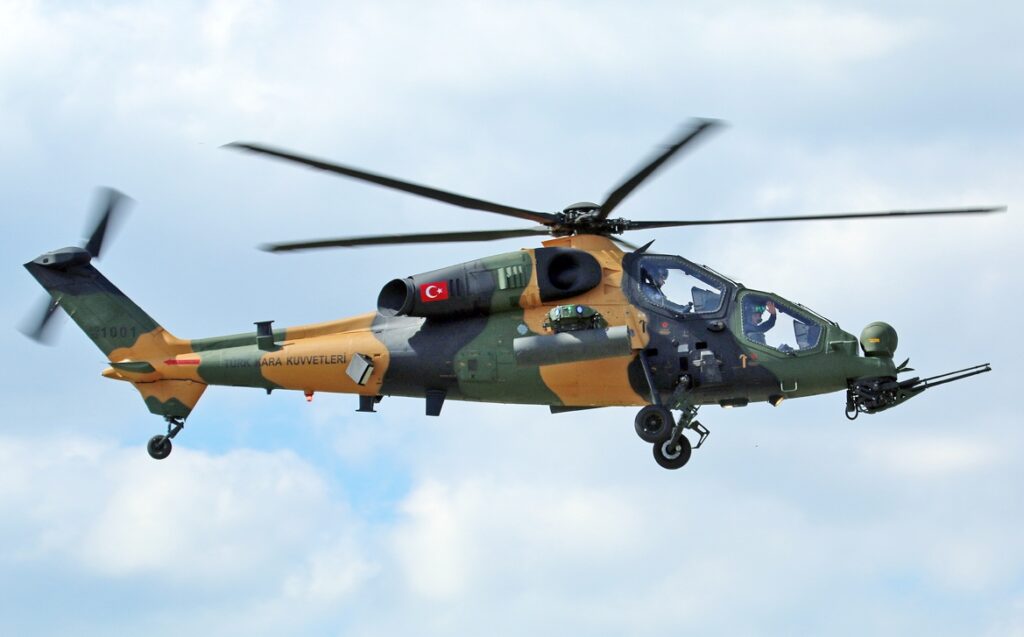
Conclusion: Reflecting on the Top 10 Attack Helicopters of the World
From the Boeing AH-64 Apache to the TAI T129 ATAK, these top 10 attack helicopters of the world illustrate aviation progress. In 2025, models like the Ka-52 Alligator lead in ruggedness, while the AH-1S Cobra maintains a historic legacy. Moreover, helicopters adapt to drone threats with advanced upgrades. However, challenges like maintenance costs and anti-air vulnerabilities persist. Therefore, understanding the top 10 attack helicopters of the world reveals military trends. As warfare evolves, innovations in AI and precision weapons will shape their future. Additionally, global adoption grows through exports. The future holds unmanned variants and hybrid designs. This transforms aerial support. Overall, these helicopters remain vital for armed forces.

